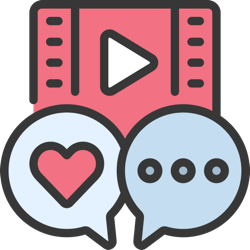What is engagement? How do I measure it?
If there’s a buzzword even buzzier than community, it’s “engagement.”
Breaking it down, engagement simply means a human interaction. It could take the form of an emoji reaction, a social share, a comment, a reply, or anything else that means your community has a pulse.
But we’re not just talking about woohoo, squishy metrics here.
And of course you want engagement if you’re establishing a new online community, but how will you know it when you see it?
- Define engagement in terms of specific actions, like inviting other new members, or sharing community content to social networks, or writing a blog post that gets thousands of page views.
- Set up action alerts
Set up a mechanism that keeps you on top of small and large engagement actions within your community. You need to be able to see hot topics as they’re emerging, so you can keep it going if needed. - Do routine monitoring and reporting
In addition to in-the-moment alerts, set aside specific time each week to look at engagement at a macro level. This will help you see trends, and will give you a way to report successes to the rest of your team. - Trigger words
Some types of engagement deserve special attention. You may want to set up a trigger alert for any time the word “thanks” or “grateful” or “happy” is posted in the community. (We have a whole lesson on negative engagement, but it goes without saying you may want to set up trigger alerts for the opposite of those words too.)
Beware of anyone in your organization who just tells you to “get engagement” going.
There’s a big difference between a community where everyone is just automatically mashing the “like” button on every comment, and a community where there’s meaningful conversation on your specific topic.
